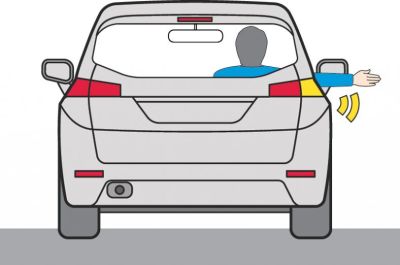|
|
此文章由 s970022 原创或转贴,不代表本站立场和观点,版权归 oursteps.com.au 和作者 s970022 所有!转贴必须注明作者、出处和本声明,并保持内容完整
Indicating and hand signals
Indicating (also called signalling) is when you use your indicator to warn other drivers that you intend to move left or right. For example, when you turn, overtake or change lanes.
Plan your turns, lane changes and moves early, so you’re in the correct lane and have enough time to indicate. Always check for other vehicles by looking in your mirrors and checking your blind spots.
You must indicate before you:
turn right or left
move to the right or left
make a U-turn or three-point turn
change lanes, including when overtaking
merge with another lane
pull over to stop or park
pull out from the side of the road
turn right or left at a roundabout
go straight ahead at a T-intersection where the continuing road curves to the right or left
leave a roundabout, if practical.
Make sure your indicator is turned off after each turn or lane change.
Before pulling out from the side of the road or a parking area, you must indicate for at least 5 seconds.
If your vehicle is fitted with indicators, they must be working and clearly visible. If they’re not working, you can get a Defect Notice.
Hand signals
If your indicators are not working or not clearly visible or your vehicle is not fitted with them, you must give a hand signal when turning right or stopping.
Bicycle riders must give a hand signal when turning right.


Hand Stop indication example
Extend your arm to the right and bend at the elbow to signal you’re stopping
Hand Right turn indication example
Extend your arm to the right to signal you’re turning right |
|
 我搬!买车记--交作业 (2004-12-19) flyswat
我搬!买车记--交作业 (2004-12-19) flyswat  裁员记 (2009-2-11) garysu
裁员记 (2009-2-11) garysu  软糯鲜香的【芋头扣肉】 (2012-5-16) chesecake
软糯鲜香的【芋头扣肉】 (2012-5-16) chesecake  说说我在OSH工作的那些日子 – 零门槛无压力工 (2018-10-5) 缓缓
说说我在OSH工作的那些日子 – 零门槛无压力工 (2018-10-5) 缓缓